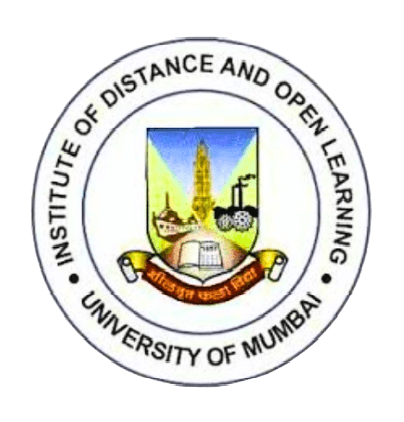M.com Part 2 Financial Management mcq pdf
Financial Management M.com MCQ M.com Part 2 All Subject MCQ Link In One Link Click Here👈 1) Public issue of debentures or bonds now require a) Compulsory credit rating b) Unanimous voting c) permission from banks d) Profitability ANS: A 2) The risk free Interest rate is composed of a) An Inflation premium and a default risk premium b) A default risk premium and a maturity risk premium c) A real rate of interest and liquidity premium d) A real rate of interest and an inflation premium ANS: D 3) NPV consider benefits during … life of the project a) Entire b) Starting c) Ending d) Middle ANS: A 4) ……..is not a inventory a) Machine b) Raw material c) Finished products d) Consumable tools ANS: A 5) …….brings cost of project & it’s cash inflows to equality a) NPV b) IRR c) PBP d) profitability index ANS: B 6) which one of the following is an owned capital a) debentures b) equity shares c) loan from financial institutions d) bonds ANS: B 7) working capital requirements depends on ..of an organisation a) current Assets b) Bank balance c) Fixed assets d) Size ANS: C 8) DSO stands for. a) Debtors sales outstanding b) days sales outsourcing c) days sales outstanding d) debtors supply outsourcing ANS: C 9) profit maximisation is also called as a) Cashing per share maximization b) giving per share maximization c) procuring per share maximization d) banking per share maximization ANS: B 10) ……. is a situation where a constraint or budget ceiling is placed on the total size of capital expenditure during a particular period a) capital rationing b) capital budgeting c) cost capital d) capital investment ANS: A 11) if sales is RS 2000 variable cost is Rs 1200 fixed cost Rs 400 and interest is Rs 100 what is combine leverage a) 2 b) 0.5 c) 33 d) 67 ANS: D 12) manufacturing organisation requires a) Larger working capital b) smaller working capital c) moderate working capital d) no working capital ANS: A 13) which of the following approach consider average rate of return realized in the past few years is historical regarded as expected return. a) NPV approach b) realized yield approach c) price earning approach d) mm approach ANS: B 14) working capital required is treated as… in capital budgeting a) cash outflow b) cash inflow c) cost of capital d) cost of goodwill ANS: B 15) Find odd one out a) Share capital b) Investment c) Loan d) Reserves ANS: B 16) the purpose of …is to divide all of a company stock into three groups a) EOQ b) H.ML classification c) perpetual inventory system d) abc analysis ANS: A 17) Profit maximisation is also called as a) cashing per share maximisation b) giving per share maximisation c) procuring per share maximisation d) banking per share maximization ANS: B 18) what trend is projected by profitability ratio a) cost share and profit b) absolute figures c) standards d) budgets ANS: A 19) If a project has cost of 6 crores.its plis 5 find its NPV a) 3 b) 6 c) 9 d) 12 ANS: A 20) Liquidity ratio indicate the ability of company to meets it a) current liability b) text liability c) long term obligations d) shareholders claim ANS: C 21) working capital required it is treated as ……in capital budgeting a) cash outflow b) cash inflow c) cost of capital d) cost of goodwill ANS: B 22) the cost insurance and text are included in …. a) cost of ordering b) set up cost c) inventory carring cost d) cost of shortage ANS: C 23) Finance function involve … a) procurement of finance only b) expenditure of fund only c) safe custody d) procurement and effective utilisation of funds ANS: D 24) …… brings cost of project and it’s cash inflow to rquality a) NPV b) IRR c) PBP d) profibility index ANS: B 25) ……..from the following is not a capital structure theory a) net income b) net operating income c) Modigliani miller d) arbitrage ANS: D If You Need Most Importance MCQ PDF FINANCIAL MANAGEMENT Question Bank Than Pay Rs 100 Only Contact 8652719712 / 8779537141 JoinTelegram Group Mumbai Univeersity :- https://t.me/mumbaiuniversityidol Suraj Patel Education :- https://t.me/surajpateleducation F.Y.J.C EXAM :- https://t.me/FYJCexam S.Y.J.C EXAM :- https://t.me/SYJCexam F.Y EXAM :- https://t.me/fyexam S.Y EXAM :- https://t.me/syexam T.Y EXAM :- https://t.me/tyexam M.Com Part 1 EXAM :- https://t.me/McomPart1Exam M.Com Part 2 EXAM :- https://t.me/McomPart2Exam M.A EXAM :- https://t.me/mastudentsexam YouTube Channel https://www.youtube.com/channel/UCNxVWIrZ1JYB4y-bWXfaBAw M.COM PART 2 Other Subject MCQ International Marketing https://www.surajpateleducation.com/2021/02/international-marketing-mcq-with.html ORGANISATIONAL BEHAVIOUR 1) https://www.surajpateleducation.com/2021/01/mcom-part-2-organisational-behaviour-mcq.html 2) https://www.surajpateleducation.com/2021/01/organisational-behaviour-mcq-pdf-mcom.html Entrepreneurship 1) https://www.surajpateleducation.com/2021/01/entrepreneurship-mcom-part-2-multiple.html 2) https://www.surajpateleducation.com/2021/01/entrepreneurship-development-importance.html Direct Tax 1) https://www.surajpateleducation.com/2021/01/direct-tax-mcom-part-2-importance-mcq.html 2) https://www.surajpateleducation.com/2020/12/direct-tax-mcom-part-2-mcq-pdf.html



